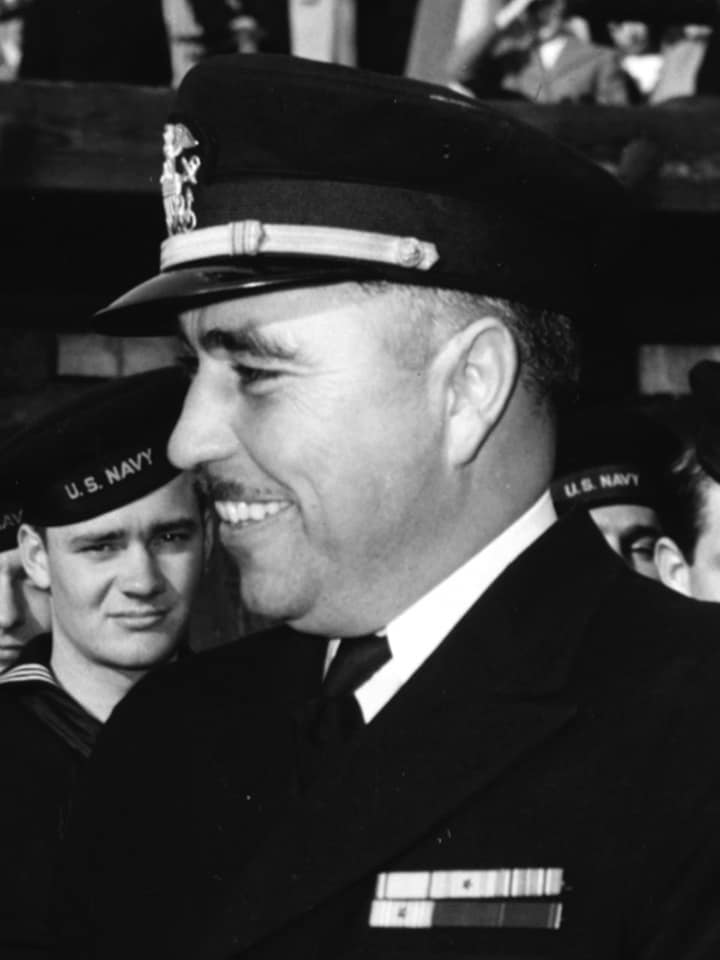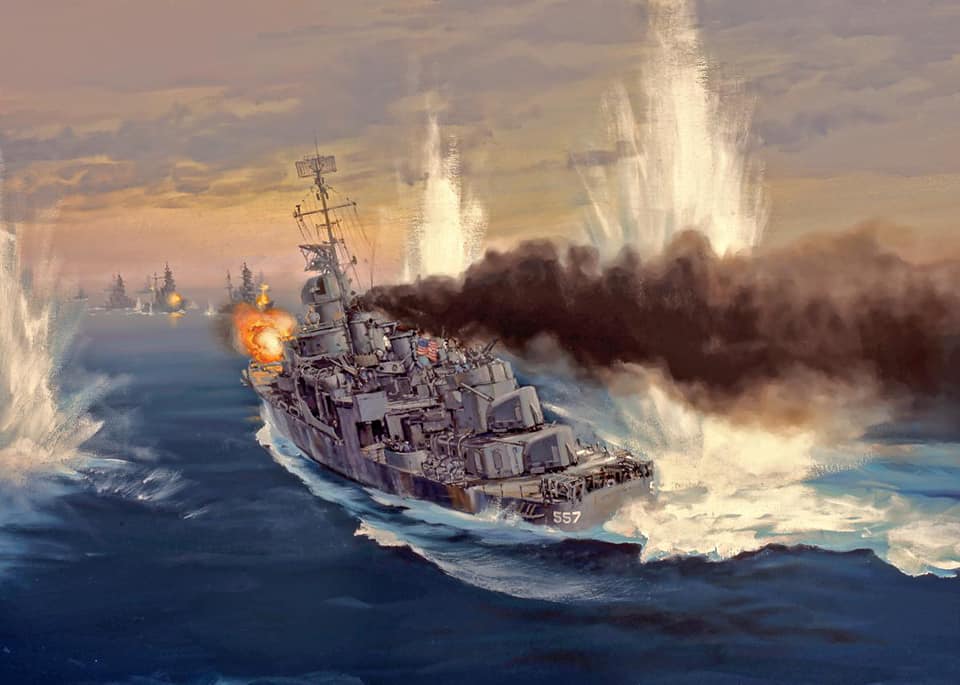Commander Ernest E. Evans: The Hero of the Battle of Samar

“This is going to be a fighting ship. I intend to go in harm’s way and anyone who doesn’t want to go along, had better get off right now.”
Meet “The Big Chief”
Meet the man they called “The Big Chief” and hero of the Battle of Samar. Commander Ernest E. Evans was the captain of the U.S.S. Johnston (DD-557) when the Japanese Center Force began to bear down on Taffy 3.
Prior to being assigned to the Johnston, Evans had been in command of a much older Clemson-class destroyer and had actually seen action around Australia, New Guinea, and the Dutch East Indies. In 1943, he took command of the newly built Fletcher-class Johnston, where he made that speech you see at the beginning to his crew.
The Battle Begins
On the morning of October 25, 1944, radar began to detect the Japanese task force that consisted of 4 battleships, 6 heavy cruisers, 2 light cruisers, and 11 destroyers. Obviously, Johnston and the other ships of Taffy 3 were outgunned and outnumbered, but they were the only force standing between the Japanese and the American Landing Force. A fact Evans knew well.

After deploying smoke to cover the carriers’ retreat, Evans ordered the Johnston to charge the Japanese fleet. Its 5-inch main guns opened fire on any target that was in range, which happened to be the light cruiser Kumano. Though not powerful, Johnston’s guns were more accurate and were able to do real damage to the superstructure. Eventually, Evans ordered all ten of his torpedoes be launched at the cruiser and managed to blow its bow clean off, effectively knocking Kumano out of the fight.
A Desperate Defense
But as Johnston turned away, she was hit by shells from the battleship Yamato. This seriously wounded Evans and practically destroyed the bridge. Worst still, the engines were damaged, cutting her speed in half. Despite his wounds, Evans continued to command his ship while the crew managed to contain the damage as best they could.
Though his ship was crippled and had already used its torpedoes, Evans joined in on a second torpedo run at the Japanese ships, this time using his remaining guns to cover the other destroyers. Suddenly, Evans saw a Japanese cruiser leading a line of destroyers towards the carriers. They were about to do a torpedo run of their own, and Evans knew this. In response, he ordered the Johnston to charge at the Japanese ships and successfully threw off their attack. But Johnston paid the price as she was soon surrounded and raked by enemy fire.
The Final Moments
That was it; Johnston was taking on water, and her engines were knocked out. Giving the order to abandon ship, Evans was seen abandoning ship with the crew—and was never seen again. No one knows what happened to him afterwards, and he was not picked up by the rescue teams after the battle. It is possible he died of his wounds while in the water, and thus, is listed as “Missing in Action.”
For his actions, Evans was posthumously awarded the Medal of Honor for his material contribution to the decisive victory won in Leyte Gulf, as well as a shared Presidential Unit Citation with the rest of Taffy 3.
~NC










